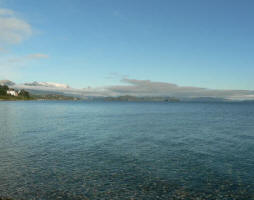 ESA and World Bank move towards closer collaboration
ESA and World Bank move towards closer collaboration
The World Bank is a vital source of financial and technical assistance to developing countries around the world. At first glance, this may not appear to be connected to space technology, but large development projects and the state of Earth's environment are intrinsically linked.
Global climate change is also an increasingly important challenge in overcoming poverty and advancing development in the poorest countries and communities, which will suffer the earliest and the most.
These factors have led to a growing demand for information about the state of Earth’s environment – land, oceans, atmosphere, cryosphere. The global scale, consistency and timeliness of the required information means looking at new sources of measurements: the view from space.
From their unique vantage point, Earth observation (EO)
satellites are powerful tools for monitoring the environment
consistently around the globe, and over time. This information can be
used to support the planning, implementation and assessment of a wide
range of World Bank projects, many of which may be affected by climate
change.
Given the increasing
demand for geospatial information, ESA (hosted by the Sustainable
Development Team) met with the World Bank in 2008 to raise awareness on
how European EO missions and specialist information services available
from European companies could support World Bank projects around the
globe.
Following the visit, ESA carried out some initial demonstrations over the last year to illustrate the potential of EO information and methodologies for World Bank activities helping countries better adapt to climate change.
To help the World Bank monitor the health of coral reefs in the Caribbean, ESA led a project that generated state-of-the-art EO-based information to understand the capabilities of resistance and recovery from disturbances of coral reefs off the coast of Belize.
The project incorporated sea-surface temperature data from the
Along-Track Scanning Radiometer and the Advanced Along-Track Scanning
Radiometer on ESA’s ERS-2 and Envisat satellites, wind speed and
direction data from the Active Microwave Instrument (AMI) on ERS-2 and
imagery from NASA’s Landsat to identify coastline and reef-crest areas.
Using these
data, scientists from the University of Exeter mapped a number of
important factors influencing coral health in the Northern Mesoamerican
Barrier Reef System (NMBRS). These included chronic and acute thermal
stress regimes, wave exposure areas and reef connectivity (for larvae
dispersion).
Results showed that those areas predicted to fare better under climate change (from a thermal perspective) are rare and scattered across the study area. Also, if over-fished, some areas are more vulnerable to becoming dominated by seaweed with a resultant loss of corals (for example, north of the barrier reef and the seaward side of the atolls). Finally, the reefs are in general well connected, facilitating the dispersion of larvae.
According to the UN, Bangladesh is one of the few countries to experience potentially catastrophic consequences of climatic change. A critical variable that determines the vulnerability of the South Asian country to climate change impact is the magnitude of sea-level rise.
ESA carried out projects to demonstrate the potential of different EO data and methodologies for coastal change mapping to provide improved input data for models that try to describe the long-term effects of possible sea-level rise due to global warming.
Using EO data from the Disaster Management Constellation (DMC), SPOT, NASA’s Landsat Enhanced Thematic Mapper, ASTER, Ikonos, and QuickBird from the last decade over the majority of Bangladesh’s coastal region, scientists were able to illustrate how EO can contribute to coastal monitoring.
The situation is very complex owing to large tidal effects in the area. The individual annual erosion and accumulation rates observed from EO satellites show strong spatial variability, as seen in the image above.
These initial demonstrations have raised interest from the World Bank in European EO capabilities, and further requests for support are in the pipeline. Discussions are under way for ESA to support additional projects such as sea-level rise in the Caribbean, forest degradation in the Amazon, and water resources management in the Maghreb and Middle East regions. There are many other possibilities for EO information to be put to use in World Bank activities; both organisations look forward to a longer-term and more formalised form of collaboration.
| Contact information | n/a |
|---|---|
| News type | Inbrief |
| File link |
http://www.esa.int/esaEO/SEMOJK9K73G_economy_0.html |
| Source of information | ESA |
| Keyword(s) | Climate Change |
| Subject(s) | INFORMATION - COMPUTER SCIENCES , MEASUREMENTS AND INSTRUMENTATION , METHTODOLOGY - STATISTICS - DECISION AID , RISKS AND CLIMATOLOGY |
| Relation | http://www.semide.net/topics/climatechange |
| Geographical coverage | International |
| News date | 15/12/2009 |
| Working language(s) | ENGLISH |
 you are not logged in
you are not logged in





